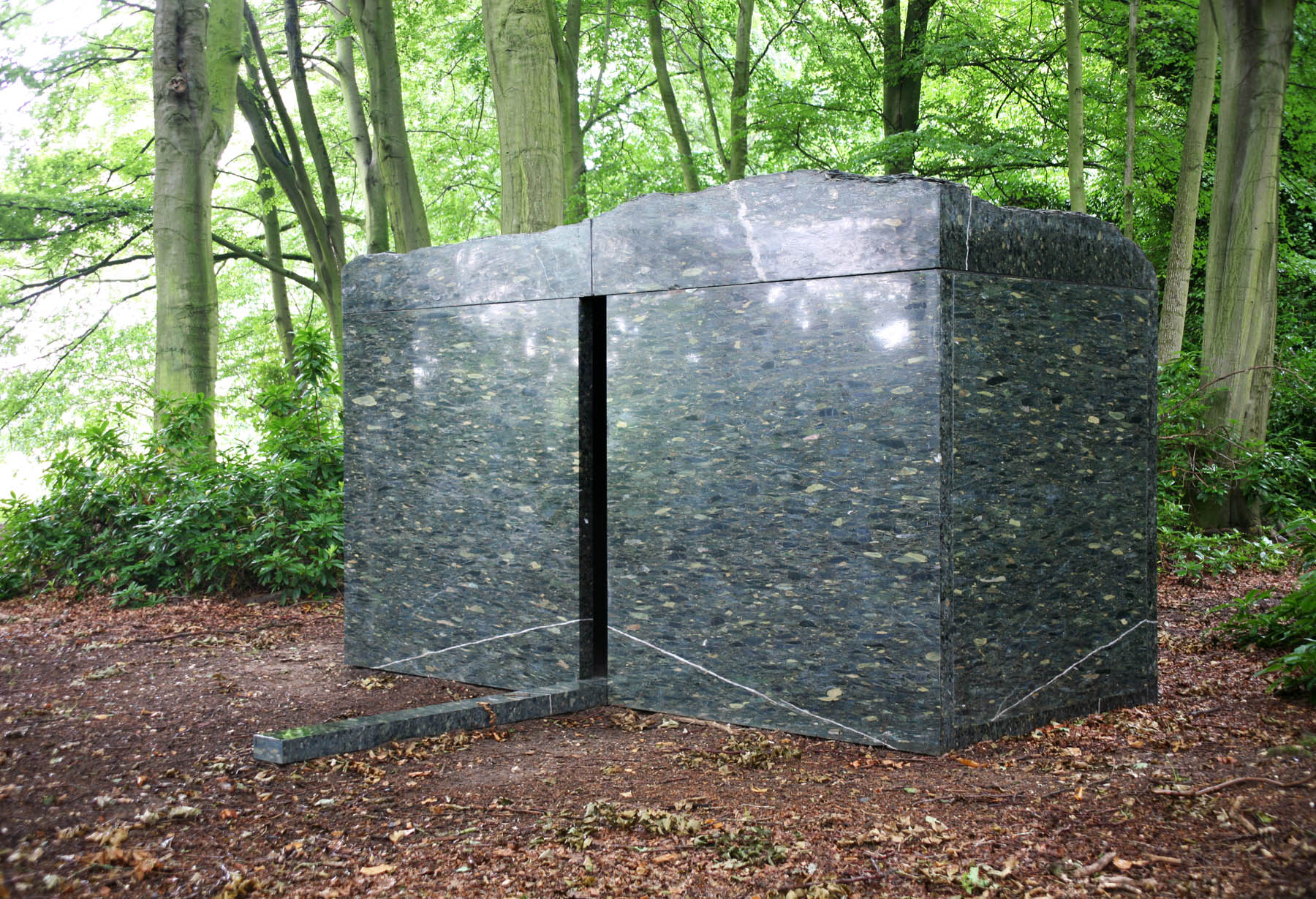Interior Space, 1995
Carved Egyptian breccia
Houghton Hall, Norfolk
This sculpture was commissioned by the Henry Moore Foundation for the exhibition Stephen Cox: Surfaces and Stones of Egypt at the Henry Moore Institute, Leeds in 1995.
Interior Space was made in Egypt with stone procured from the desert of the Eastern Mountains near the site of the ancient gold mines and stone quarries of Waddi Hammamat. These quarries and mines are registered in the World’s oldest geological map which is in the Egyptian Museum in Turin and date from the time of Pepi III. The quarries there evidence its use with graffiti scratched into the walls of the Wadi (valley) dating back to Pre Dynastic times around 3,500 BC with later visits there from as far afield as Persia from where Darius the Great and Xerxes sent expeditions for this famous stone.
This fourteen ton sculpture is constructed but references the sheer scale of the monolithic sarcophagi of the Apis Bulls at Sakkara larger than any carved out for even the greatest Pharaoh.
The imaginative conceptions of the ‘afterlife’ of the peoples of ancient civilizations is the driver of the series of Interior Spaces that Cox has produced since 1995.
This the first of the Interior Spaces was exhibited after the Henry Moore Institute in the centre of the Central Hall at the Royal Academy Summer Exhibition in 1996, Stephen Cox at The Dulwich Picture Gallery 1997 and British Sculpture at Schloss Ambras, Innsbruck 1998-9. It was purchased by Lord Chalmondely for Houghton Hall in 2000.
Also at Houghton Hall:
Flask II, 2002
Hand-carved Egyptian breccia





